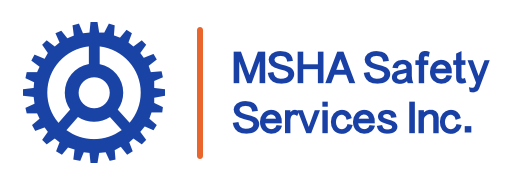Roof falls are one of the most serious hazards in underground mining, and staying ahead of them starts with strong safety standards and full compliance with MSHA regulations. These rules aren’t just about checking boxes—they’re about protecting lives. By following the best practices for roof fall prevention, mines can create safer working environments while also avoiding costly setbacks and violations. Having clear protocols and procedures in roof falls ensures that if something does go wrong, crews know exactly how to respond. From planning and training to inspections and emergency response, this article breaks down what MSHA expects and how mine operators can stay compliant while keeping their teams safe.
MSHA Roof Control Requirements
Compliance with MSHA regulations is more than just meeting legal obligations, it’s a critical step in protecting workers from one of mining’s most serious threats: roof falls. MSHA requires all underground coal mines to develop and maintain a detailed roof control plan that is approved before mining begins. This plan outlines the types of support to be used, installation techniques, spacing, and safety protocols.
Each plan must be site-specific, taking into account the unique geology and conditions of the mine. Regular updates are mandatory, especially if there are changes in equipment or mining methods. Compliance ensures not only legal protection but the safety and longevity of the mine itself.
Best Practices for Roof Fall Prevention
Effective planning integrates best practices for roof fall prevention from the very beginning. This includes geotechnical surveys to identify weak rock layers, mapping of stress zones, and designing a support layout accordingly. A good plan is proactive and it anticipates risks and adapts quickly to unexpected conditions.
Support systems should be installed as mining progresses, not after the fact. Engineering input is vital, and collaboration between frontline workers and supervisors often results in more practical and enforceable plans.
Choosing MSHA-Compliant Roof Support Systems
Not all roof supports are created equal. MSHA has strict guidelines for what counts as compliant. Common systems include:
- Mechanical roof bolts and cable bolts
- Steel arches and mesh reinforcements
- Pumpable resin or grout for high-pressure areas
Choosing the right system depends on the local geology, the size of the opening, and the mining method. Proper installation and regular testing ensure these systems perform as intended and maintain compliance.
![]()
![]()

Reviewing and Updating Roof Control Plans
Your roof control plan isn’t a one-and-done document. It must evolve with your mine. Anytime a new section opens, equipment changes, or geological conditions shift, the plan must be reviewed and updated.
MSHA encourages mines to treat the plan as a living document. That means conducting routine audits, getting feedback from workers, and documenting lessons learned from past incidents. These reviews keep the plan realistic and reflective of current conditions.
Training and Protocols for Roof Fall Response
All mine workers should be trained not only in prevention but in response protocols in case a roof fall occurs. Training should include:
- How to spot early signs of roof movement.
- Emergency evacuation routes and signals.
- Proper use of communication equipment during an emergency.
- Hands-on practice drills to reinforce learning.
Comprehensive training supports faster, more coordinated responses and helps reduce injuries and confusion during real incidents.
Monitoring and Reporting Roof Falls
According to MSHA standards under 30 C.F.R. § 50.10, operators are required to immediately report certain types of unplanned roof falls as “accidents.” Specifically, 30 C.F.R. § 50.2 defines an “accident” as any unplanned roof fall that occurs at or above the anchorage zone in active mining areas where roof bolts are in use. It also includes any unplanned roof or rib falls in active workings that affect ventilation or obstruct travel.
Emergency Response Procedures for Roof Falls
When a roof fall happens, time is critical. Emergency procedures should be clearly written, practiced regularly, and include:
- Rapid notification of MSHA and mine safety teams
- Controlled evacuation of affected areas
- Rescue readiness and medical response
- Post-incident analysis and reporting
Having a tested emergency response plan saves lives and reduces chaos during high-stress situations.
Staying Current with MSHA Rule Changes
MSHA regulations evolve as technology improves and new research becomes available. Staying current means subscribing to MSHA updates, participating in workshops, and engaging with industry groups. Mines that stay informed are better positioned to adjust quickly and remain compliant.
Annual internal reviews and third-party compliance audits can help flag outdated practices and ensure ongoing alignment with current rules.
Avoiding Violations with Prevention Best Practices
Many MSHA violations are avoidable with proper planning and oversight. Common issues include:
- Inadequate support spacing
- Failure to update roof control plans
- Poor documentation
- Untrained personnel installing roof supports
Preventive measures—such as ongoing training, real-time monitoring, and regular inspections—minimize the chance of violations and create a stronger safety culture.
MSHA Inspections and Audit Preparation
MSHA inspections are thorough and sometimes unannounced. Preparation includes:
- Ensuring roof control plans are up to date and accessible
- Keeping training records and support system certifications on file
- Having a designated safety officer familiar with the plan
- Performing mock audits and safety drills
The better prepared a mine is, the smoother inspections will go, and the more confident the team will feel.
Advancing Mine Safety Through Compliance
True mine safety comes from more than just checking boxes—it’s about creating a culture where compliance with MSHA regulations is embraced as a daily habit. Through continuous planning, education, monitoring, and communication, mining operations can protect their teams and maintain high performance.
A compliant mine isn’t just safer—it’s more efficient, more respected, and more sustainable for the future.

